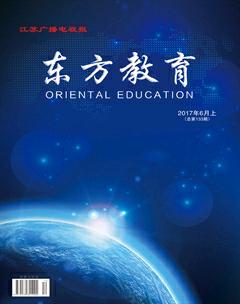An Analysis of "The Open Boat" from the Perspective of Naturalism
江玥+吕中华
Naturalism is a literary movement, taking place from 1880s to 1940s that used detailed realism to suggest that social conditions, heredity, and environment had inescapable force in shaping human character. In this essay, the historical background of the forming of naturalism, the characteristics of naturalism and the growth environment of Stephen Crane will need to be depicted.
Key Words: naturalism; "The Open Boat"
1. The Introduction to Naturalism
During the 1880s to 1940s, there appears a new literary trend: naturalism, which aims to expose the degradation, ugliness, and degeneration of society. The main topics of the naturalists were the indifference of nature and the irresistible force: like heredity, social conditions and environment in shaping human character.
The outgrowth of Naturalism is to determine "scientifically" the underlying forces (e.g. the environment or heredity) influencing the actions of its subjects; to deal with uncouth or sordid matter; to expose the dark harshness of life.
2. Detailed Analysis of "The Open Boat"
"The Open Boat" is the classical work of naturalism, maybe Crane did not think then as we think today, but every generation has its own comprehension of the short story. In certain sense, the novel has its own universal value in that we can find its warning function regardless of time and space.
As to section I, it serves as the basis of the story. It introduces the environment and main characters. The cook, the captain, the oiler and the correspondent were confined in a small boat on the wide surface of the sea under the blue sky. They encountered shipwreck during their cruise so that the four experienced life and death together in 24 hours.
Therein, the oiler is called “Billie”, who is the only character in the story with a name; others were just called through their professions. He is also the strongest among the four physically, which may indicate that he is the most potential one to survive during the disaster. The namelessness of the other three may indicate that the story can occur on anyone or every average people. So, the universality of the story can initially be seen here.
Return to the beginning of the story, the four men were fully focused on the sea that they were facing, without noticing the pale blue sky, which is a scene can be used to depict modern development of some nations. They just care about the immediate interests, especially economic profits without considering the sustainable development of the future generations. Maybe, its a sarcasm to contemporary industrialization, during which people were busy in the hustle and bustle of getting gold and money.
The boat was so small and wild on the sea, as a horse without limitation. At this moment, the people became the babies of the sea. “Babies” may symbolize the plaything of nature in that they were powerless facing omnipresent and omnipotent nature. It creates a desperate scene: the life of men is too insignificant; its nothing to nature. This helps to set the basic tone of the story: pessimistic and despondent.
3. Conclusion
In general,"The Open Boat"depicts mans existential situation. The adjective "Open” may indicate that facing the unknown world (future, nature and etc.), men are incapable of predicating his own fate and our life is "open", full of accidental matters. But, that does not declare the doomed failure of human beings. In contrary, men can get salvation through close cooperation and solidarity. It's a challenge to the extreme individualism at that time. As we can see from the story, the oiler who swam ahead of others, without noticing the guide of the Captain, died at last. While the other three survived through unification.
Work Cited
[1]David.S.Gross, "The Western Stories of Stephen Crane". Oklahoma: Journal of American Culture, 2002
[2]Hins Fink, Three Sorts of Naturalism. Malden: European Journal of Philosophy, 2006

